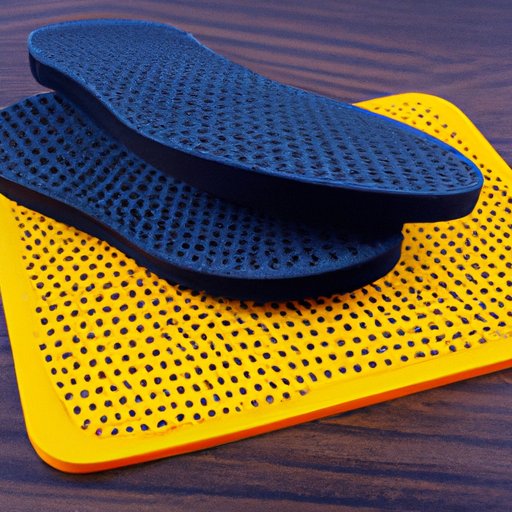Introduction
Slips, trips, and falls are some of the most common causes of injury in the workplace. According to the Occupational Safety and Health Administration (OSHA), slips, trips, and falls account for approximately 15% of all accidental deaths in the workplace, and are the second leading cause of fatal injuries in the United States.
The purpose of this article is to provide information on how to prevent slips, trips, and falls in the workplace. We will discuss topics such as appropriate footwear for employees, keeping floors clean and dry, training on proper lifting techniques, and using non-slip mats and other anti-slip materials.
Appropriate Footwear for Employees
One way to reduce the risk of slips, trips, and falls in the workplace is to ensure that employees are wearing the appropriate footwear. Shoes with a good grip and adequate cushioning are important for providing the necessary support and traction to prevent slips, trips, and falls. Shoes should also be well-maintained and free from any defects that could cause a trip or fall.
It is also important to have an effective footwear policy in place. This policy should specify what types of shoes are acceptable to wear in the workplace, and which types are not. The policy should also include guidelines for when shoes should be replaced if they become worn or damaged.
Keeping Floors Clean and Dry
Another important step in preventing slips, trips, and falls is to keep floors clean and dry. A regular cleaning schedule should be established so that floors are cleaned and debris is removed on a regular basis. Spills and other wet spots should also be addressed immediately to reduce the risk of someone slipping on them.
In addition, it is important to ensure that floors are free from clutter and other potential tripping hazards. Regular inspections should be conducted to identify any areas where clutter has accumulated and address them promptly.

Training on Proper Lifting Techniques
Employees should also be trained on proper lifting techniques. This includes teaching them how to lift items correctly, as well as how to move around the workplace without putting themselves at risk. Employees should be encouraged to use equipment such as forklifts and pallet jacks to help reduce the chance of injury.
It is also important to ensure that training is properly implemented. Supervisors should regularly review safety protocols with employees and make sure that they are following the proper procedures. If any issues are identified, they should be addressed promptly.
Non-Slip Mats and Other Anti-Slip Materials
Using non-slip mats and other anti-slip materials can also help reduce the risk of slips, trips, and falls. Non-slip mats should be installed in areas where there is a high risk of slipping, such as near wet areas or areas where spills are likely to occur. Anti-slip materials such as tape, paint, or rubber strips can also be used in these areas.
These materials can provide additional traction, making it less likely that someone will slip or trip. They can also help to identify areas where caution should be taken, such as near wet spots or slick surfaces.
Housekeeping Plan
Creating a housekeeping plan is also important for preventing slips, trips, and falls. This plan should include steps for ensuring that floors are regularly cleaned and kept free from clutter. It should also include guidelines for addressing spills and other wet spots quickly and safely.
Maintaining a clean and safe workspace can help reduce the risk of slips, trips, and falls. When employees know that their workspace is being monitored and maintained, they are more likely to take extra precautions when walking around the workplace.
Conclusion
Slips, trips, and falls are some of the most common causes of workplace injuries. To reduce the risk of these incidents, employers should implement strategies such as providing appropriate footwear for employees, keeping floors clean and dry, training on proper lifting techniques, and using non-slip mats and other anti-slip materials.
By taking these steps, employers can create a safer environment for their employees and reduce the risk of slips, trips, and falls.
(Note: Is this article not meeting your expectations? Do you have knowledge or insights to share? Unlock new opportunities and expand your reach by joining our authors team. Click Registration to join us and share your expertise with our readers.)
